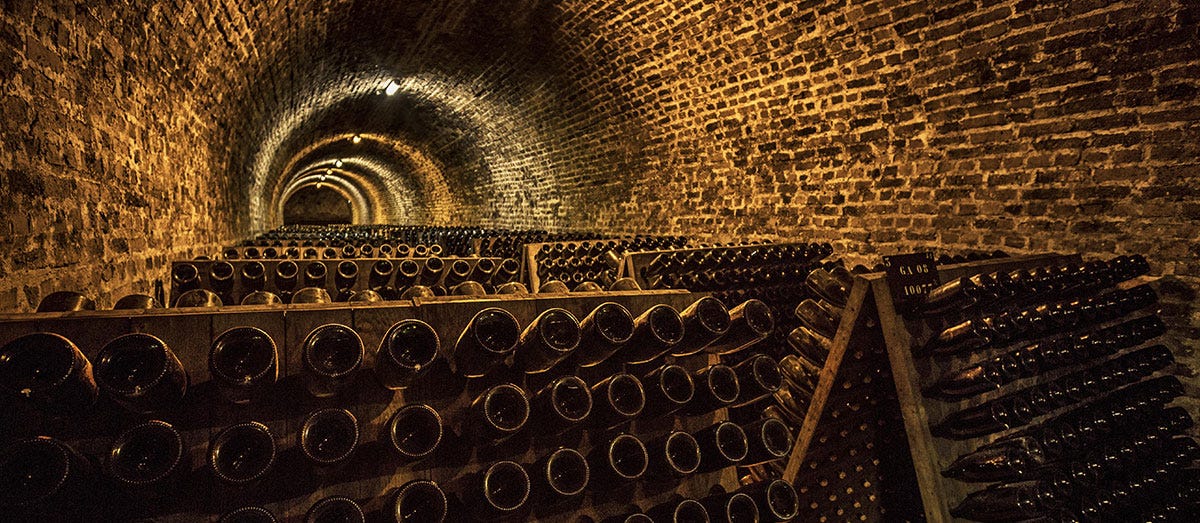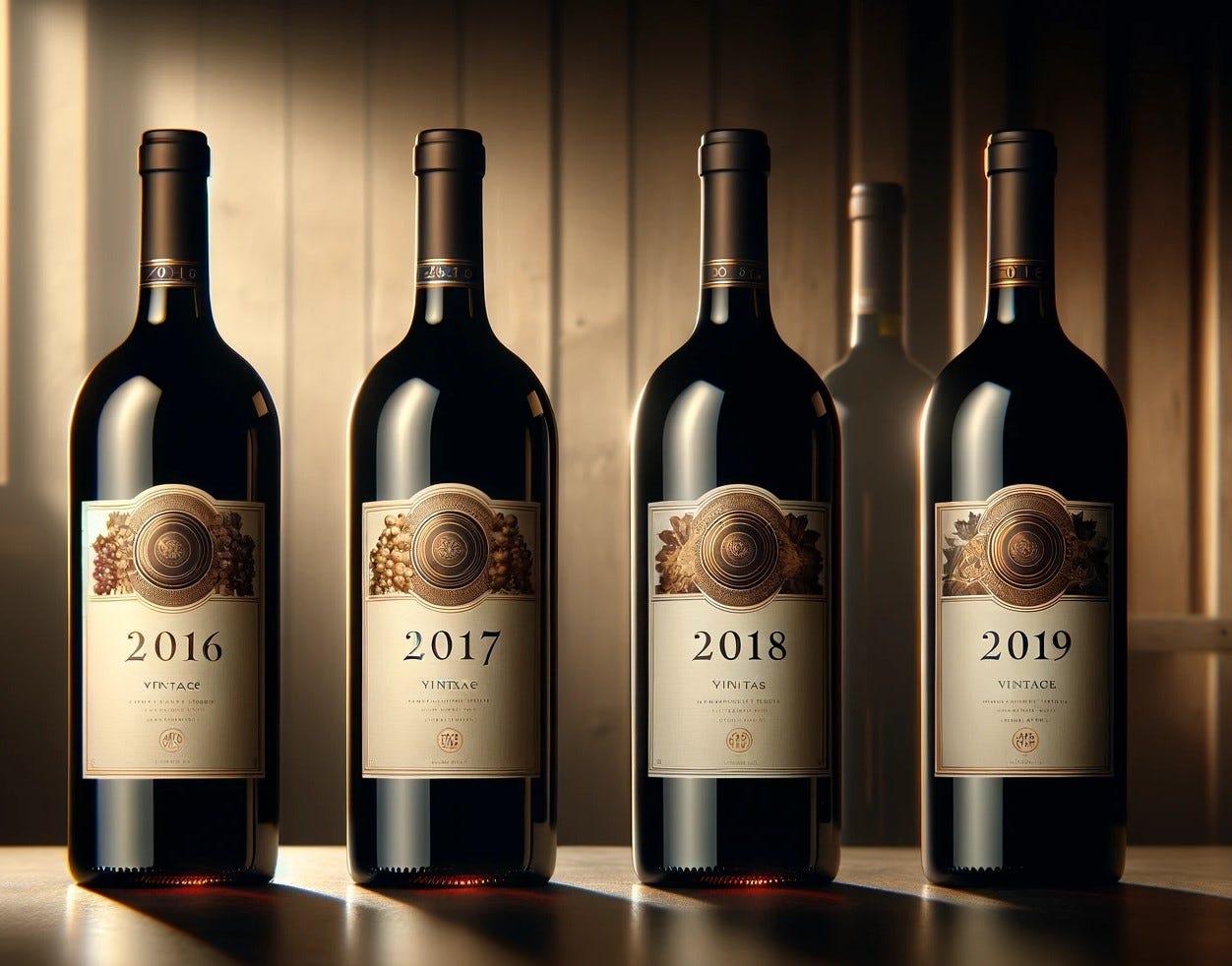#77 One Way to Think About Storing Wine
Ask this question. Prepare for the short and long answer.
Last week’s Substack #78 on aging Dry Riesling prompted a question from a reader. In that Substack, we reported that Dry Riesling can age for many, many years, provided that it is properly stored.
“What,” this reader asked, “is the proper way to store wine?”
The short answer to this is: in a cool, dry place away from direct sunlight where the temperature does not vary too much. If you have a basement that is dry, that will work. And, if the bottle is closed with a cork, it should be on it side, or upside down, to keep the cork from drying out. Cork shrinks when it dries out; that admits oxygen which spoils the wine.
But that is not the complete answer to the question.
If you have decided to save just one bottle of wine, and if you plan to age that wine for ten years, chances are it will never make it ten years. You will drink it sooner or later, because it is the ONLY bottle that happens to be in your basement.
To overcome the temptation to open that one bottle you were saving, you need to be saving more than one bottle of wine in general. You don’t need to be storing hundreds of bottles, but enough to keep you from drinking a wine that would be more interesting if you let it age longer.
One way to do this is to divide your storage area into “everyday” wines and “age-able” wines. If you are just starting out, setting aside 30-40 wines to age might be enough with some caveats (see below).
If you are interested in learning what happens to a particular wine, you may want to save several bottles of that same wine. That way, you can choose to drink them at different stages of the aging process, noting how they may change over time.
If you want to go further to learn how different vintages age, you will want to buy several bottles of the same style of wine every year. You may also want to note what the growing conditions were for that vintage. You can then see how wines made from a “good” vintage age compared to wines made from a “typical” vintage.
Because this may seem like a lot of work, you can make it easier by just focusing on one or two grape varieties. This is, in fact, what we have done with the three, primary grape varieties that we grow: Riesling, Gewürztraminer and Cabernet Franc. We save at least three cases of each every year and go back periodically and taste them to see how they have held up.
As you might imagine, this is our business, so it is part of understanding what we need to do to make the most interesting wines. We don’t expect the average person to go to the same lengths that we do.
But, as we suggested in Substack #41, one way to learn about wine is to focus on a very short list of grape varieties. (It would take a lifetime to get to know wines made from all the grape varieties grown in the world.) Pick just a few and get to know them very well.
And one of the ways to get to know them, is to put them away and allow them to age. But, for goodness sakes, don’t forget to bring them out and drink them sometime. That is why you saved them in the first place. To enjoy them later.





I store my wine in three categories: drink now, save for a special occasion, and save until 2030 or later. I’m just starting out and get confused about different varietals. I like your idea of picking just a few grapes.